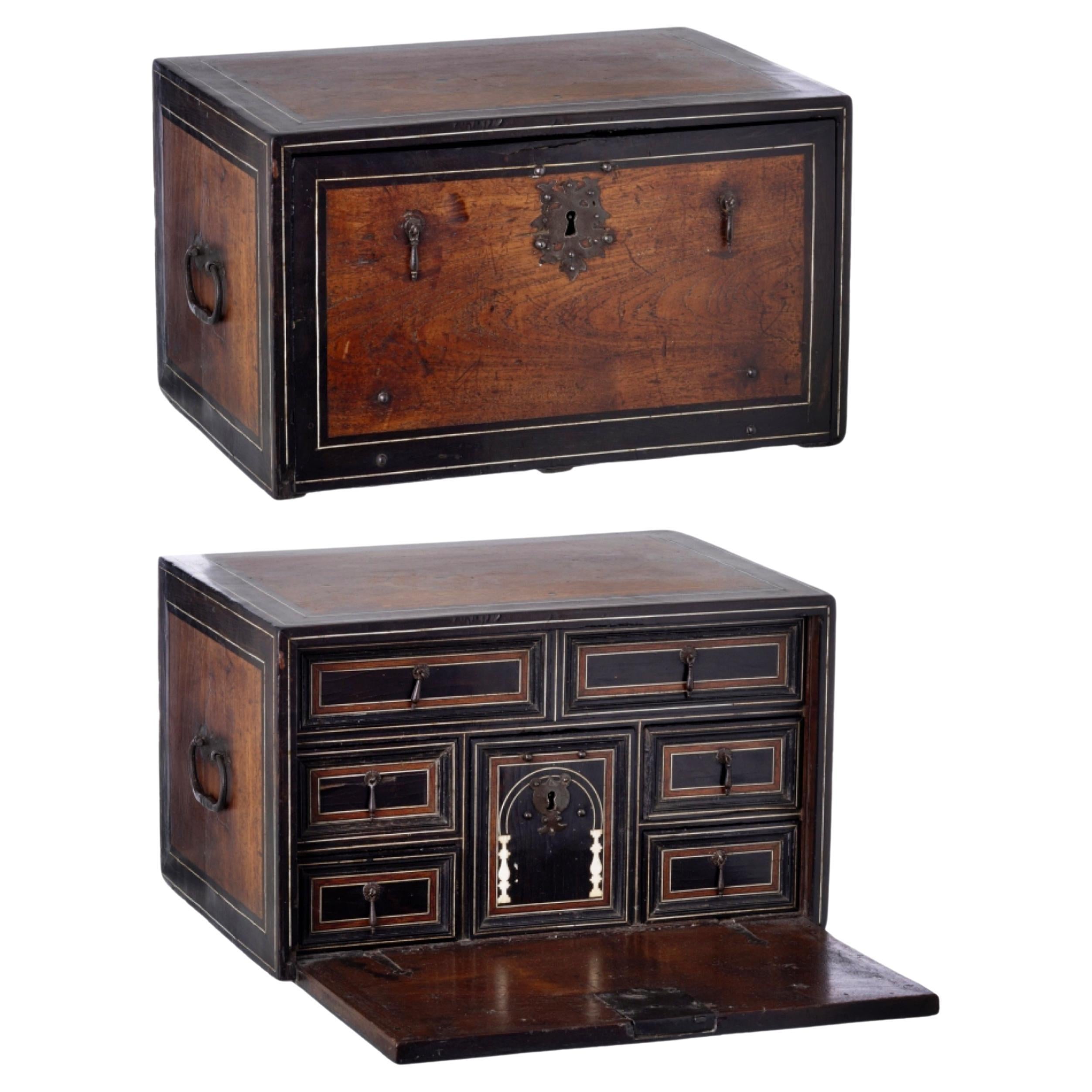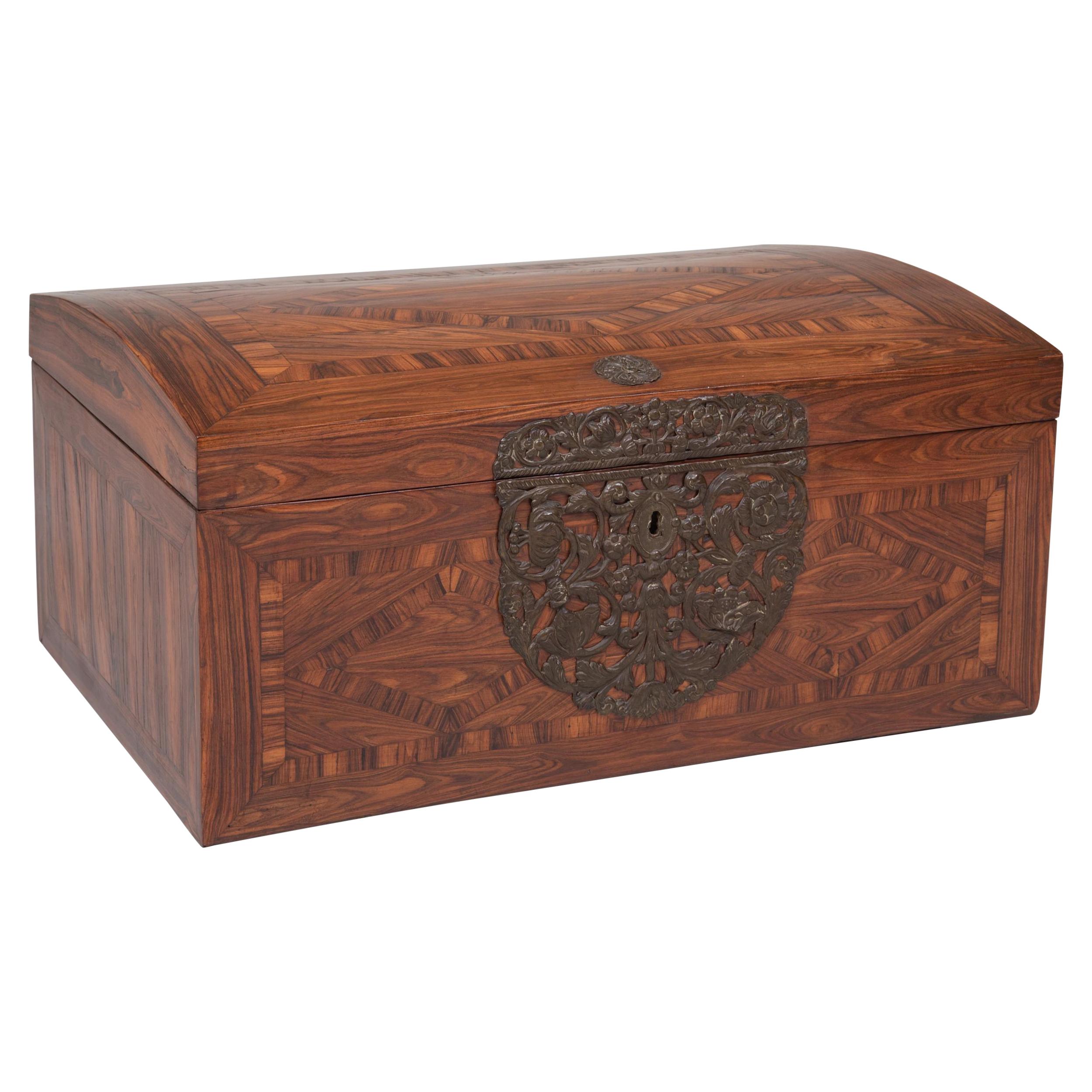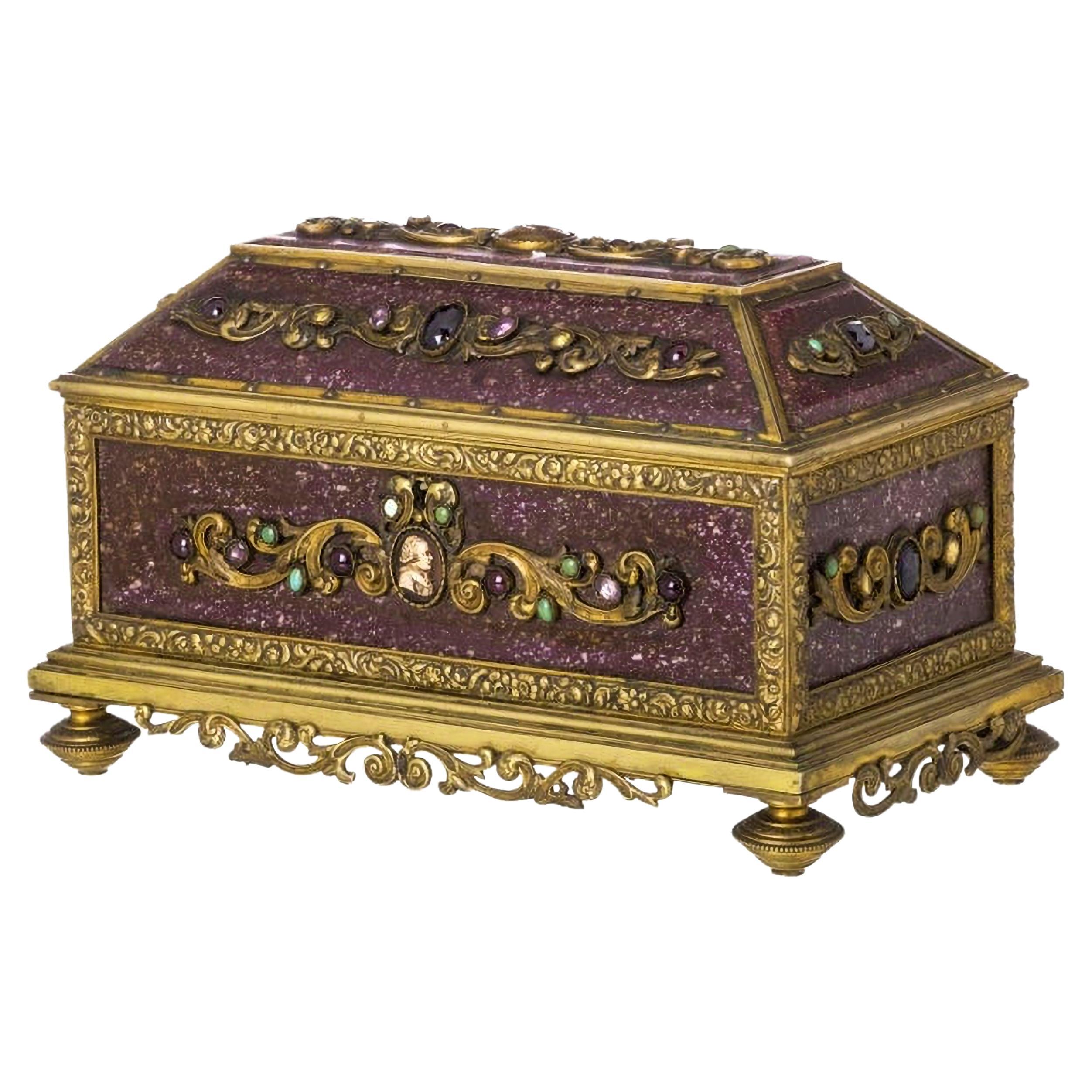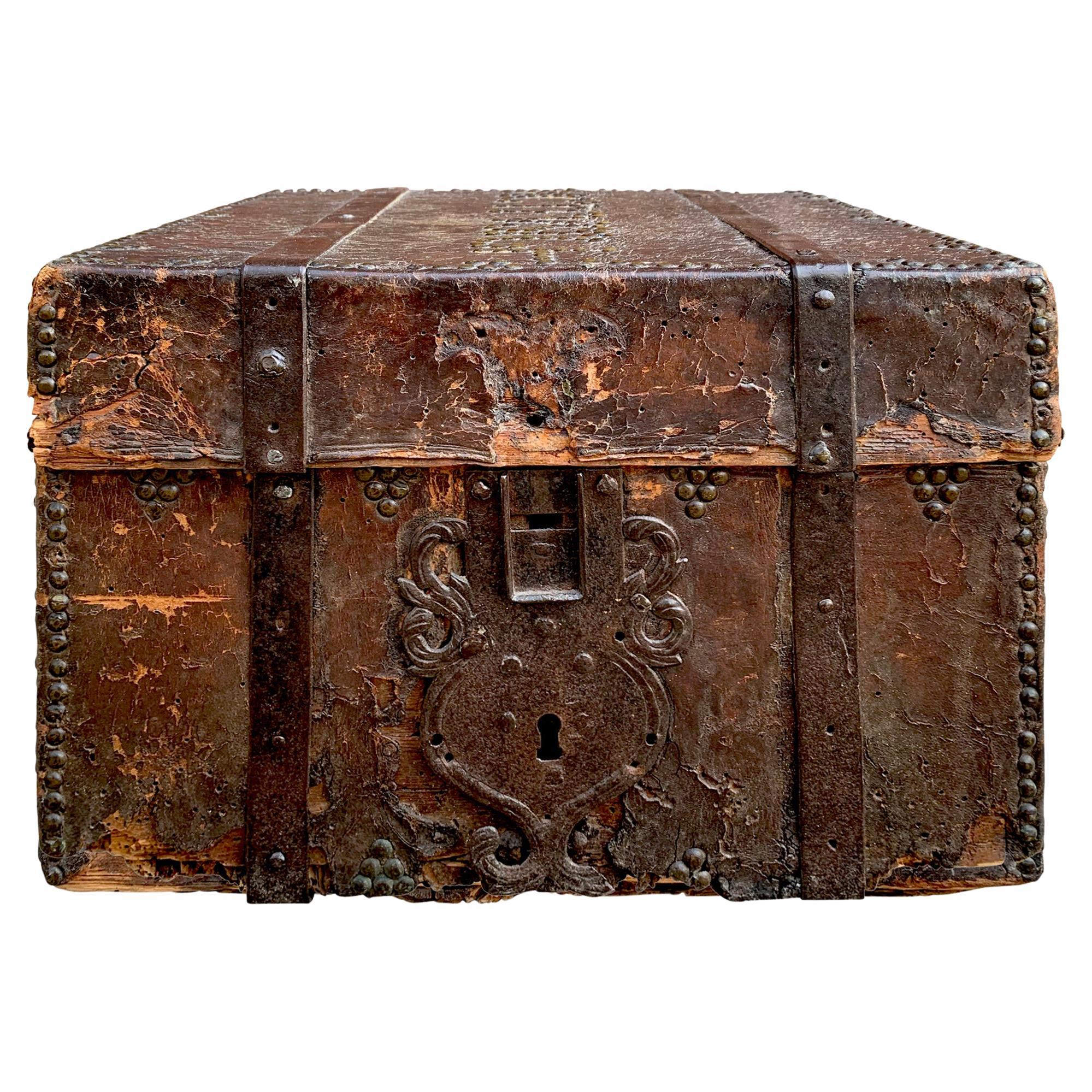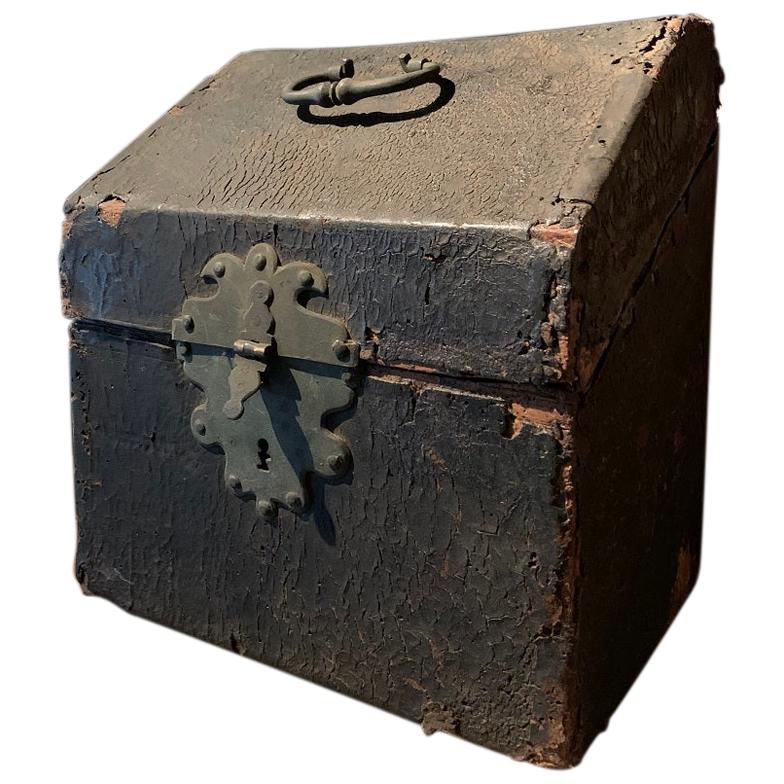Items Similar to COUNTER CASH 17th Century Flemish
Want more images or videos?
Request additional images or videos from the seller
1 of 10
COUNTER CASH 17th Century Flemish
About the Item
COUNTER CASH
17th Century Flemish
in walnut wood with inlays, consisting of two drawers and a drawer.
Signs of use.
Dim.: 31.5 x 44 x 27 cm
good state
- Creator:Europa Antiques (Cabinetmaker)
- Dimensions:Height: 12.41 in (31.5 cm)Width: 17.33 in (44 cm)Depth: 10.63 in (27 cm)
- Style:Baroque (Of the Period)
- Materials and Techniques:
- Place of Origin:
- Period:
- Date of Manufacture:17th Century
- Condition:Wear consistent with age and use. good condition for the age.
- Seller Location:Madrid, ES
- Reference Number:1stDibs: LU5779238499832
About the Seller
4.9
Platinum Seller
These expertly vetted sellers are 1stDibs' most experienced sellers and are rated highest by our customers.
Established in 2005
1stDibs seller since 2021
231 sales on 1stDibs
Typical response time: <1 hour
- ShippingRetrieving quote...Ships From: Madrid, Spain
- Return PolicyA return for this item may be initiated within 14 days of delivery.
More From This SellerView All
- COUNTER CASH Indo-Portuguese from the 17th centuryBy Europa AntiquesLocated in Madrid, ESCOUNTER CASH Indo-Portuguese from the 17th century in ebony rosewood and ivory. Top, sides and front decorated with ivory inlay. Folding top showing factory with six drawers and ...Category
Antique 17th Century Portuguese Renaissance Decorative Boxes
MaterialsEbony
- Flemish School 17th CenturyBy Europa AntiquesLocated in Madrid, ESFlemish school 17th century "Our Lady with the Child Jesus, St. John, St. Elizabeth and Zacarias". Oil on canvas Relined. Dimensions: 74 x 84 cm good conditions.Category
Antique 17th Century Dutch Baroque Paintings
MaterialsPaint
- Beautiful Flemish Tapestry, 17th CenturyBy Europa AntiquesLocated in Madrid, ESBeautiful Flemish Tapestry 17th century Southern-Netherlandish wool and linen wall tapestry from the 17th century. Depiction of strollers in front of a castle. 300 x 192 cm G...Category
Antique 17th Century Dutch Baroque Western European Rugs
MaterialsWool
- Flemish Coin Cabinet 17th CenturyBy Europa AntiquesLocated in Madrid, ESFlemish casket-bin, 17th century In walnut wood and ebonized. Nine drawers with painted mirror fronts. 38 x 73.5 x 30 cm. good condition.Category
Antique 17th Century Dutch Baroque Cabinets
MaterialsWood
- Italian Counter Cabinet 17th CenturyBy Europa AntiquesLocated in Madrid, ESCOUNTER cabinet 17th century. Italian, in different woods, inlaid and engraved bone plaques, felling top, ten drawers inside and a hatch with two draw...Category
Antique 16th Century Italian Baroque Cabinets
MaterialsBronze
- Important and Rare Italian Box Safe from the 17th Century '1647'By Europa AntiquesLocated in Madrid, ESImportant and Rare Italian box safe from the 17th century In chiseled bronze, decorated with jasper plates and hard stones, with a cameo with a male figure at the centre. Inscriptio...Category
Antique 17th Century Italian Baroque Decorative Boxes
MaterialsBronze
You May Also Like
- 17th Century Franco Flemish Kingwood Marquetry BoxLocated in Greenwich, CTFine 17th century domed box with highly figured kingwood marquetry veneer laid in a geometric pattern, the front having elaborate pierced and embossed brass escutcheon, the whole wit...Category
Antique 1690s European Baroque Jewelry Boxes
MaterialsKingwood, Pine
- 17th Century Italian Leather BoxLocated in Chicago, ILA stunning 17th century Italian leather covered wood trunk covered in brass nail heads, some spelling out a word on top, and with iron strap hinges a...Category
Antique 17th Century Italian Baroque Decorative Boxes
MaterialsLeather, Wood
- 17th Century Cutlery BoxLocated in Vosselaar, BEA 17th century cutlery box with the original leather, metal hardware and interior.Category
Antique 17th Century French Decorative Boxes
MaterialsLeather, Softwood
- Walnut and Metal Small Chest, 17th CenturyLocated in Madrid, ESSmall rectangular ark with a flat lid, with a lock of golden metal worked (crown on two facing lions, located on a garland of great size, and all around a symmetrical composition wit...Category
Antique 17th Century European Baroque Jewelry Boxes
MaterialsMetal
- 17th Century Figured Walnut and Seaweed Marquetry Lace BoxLocated in Oxfordshire, United KingdomA fine and extremely rare figured walnut and seaweed marquetry 'lace box', circa.... let’s break it down - Seaweed marquetry first appeared in Englis...Category
Antique 17th Century English Baroque Decorative Boxes
MaterialsWalnut
- Boiled Leather Trunk, Spanish, 17th CenturyLocated in Bruxelles, BELeather trunk Spanish, 17th century Boiled Leather, wood and iron Measures: 22 x 53 x 32 cm. Provenance : - collection Metz-Noblat, Château de Clevant, France Rectangular trunk of the form and size of a small suitcase with wrought iron hinges and lock-plate. Wood, covered with leather, cut and embossed with every surface of the thick cow hide covered in interlace, zoomorphic features. The construction method is boiled leather, often referred to by its French translation cuir-bouilli: a process used to change flexible, vegetable-tanned leather into rigid, moulded objects. For shaping of the vegetable-tanned leather, heat and moisture were used, as indicated by the term boiled leather. No written medieval sources describing the production of decorated cuir bouilli objects survive, so knowledge of the process relies on the important studies of the Scottish leather historian John William Waterer. A large range of methods, materials and techniques could be used in various combinations. The vegetable-tanned leather, made supple with moisture and heat, was stuffed, shaped and nailed to the rigid wooden coffer support. The stuffing material was probably modeled beeswax or stearin wax. To shape the leather, to create its topography, « Cushions » were made by lacing a thread through an awl hole and attaching the flexible leather and stuffing to the rigid wooden support on the bottom. Then the decoration was done: lines were incised through the upper layer of the leather (epidermis) with different thicknesses of knives or needles. Contours were created with deep v-shaped cuts, decoration with thin incision and final details with a needle point. For the incision and pouncing stage, the leather was probably kept heated and moistened for suppleness. Once dry, the leather would be hard and rigid. the saturated leather is worked over a form, possibly even damp sand, with the pattern shaped using bone or wooden tools. Compare to metal, leather was lighter and it offered protection from cuts and punctures. Cuir bouilli objects were produced by specialist leather workers and needed skillful craftsmanship. The surface is filled with roundels shaped foliages enclosing animals, lions and peacocks. The foliate arabesques creating a vegetal connection tweet the animals create the impression of a lush verdant space . The vegetal pattern here employed in combination with geometrical pattern came from the pre-islamic artistic traditions of the Byzantine and Sasanian empires. An aspect of Islamic geometry Is the basic symmetrical repetition and mirroring of the shapes that create a sense of harmony. The decoration of this truck is inspired by the islamic « arabesque » a form of vegetal ornament composed of spirals, intertwining plants and abstract curvilinear motifs. An arabesque character is given to the birds of the decorations through extreme stylisation. This arabesque maintained the classical tradition of median symmetry, freedom in Detail and heterogeneity of ornament. The presence of the peacocks is a paradisiacal allusion: in popular Islamic literature they were among the original inhabitants of the garden of Paradise expelled with Adam and Eve. Peacock as a decorative motif may have originated in the West, despite their eastern provenance. There was an ancient belief that the flesh and feathers of peacock do not decay. This led to the peacock becoming a christian symbol for Christ’s resurrection. Renowned for their decorative wall hangings, seventeenth-century Spanish leatherworkers also produced utilitarian objects, such as this trunk. A similar trunk is on display at the Metropolitan museum of art ( 09.158.1). Related literature : Davies L. 2006. Cuir bouilli. Conservation of leather and related materials, 94-102, Oxford: elsevier Butterworth-Heinemann Grabar, Oleg. The Mediation of Ornament. Princeton: Princeton University Press, 1992 Gabriela Germana Roquez, "El mueble en el Peru en el siglo XVIII...Category
Antique 17th Century Decorative Boxes
MaterialsIron
Recently Viewed
View AllMore Ways To Browse
Antique Furniture Used
17Th Century Antique
Antique 17th Century Antiques
Antique 17Th Century
17Th Century Antique Furniture
17th Century Antiques Antique Furniture
17th Century Wood Furniture
17th Century Wood
Antique Flemish
Flemish Furniture
Used Counter
17th Century Netherlands
Flemish Antique Furniture
Antique Flemish Furniture
17th Century Flemish
Flemish 17th
Antique Counters
Flemish Baroque
